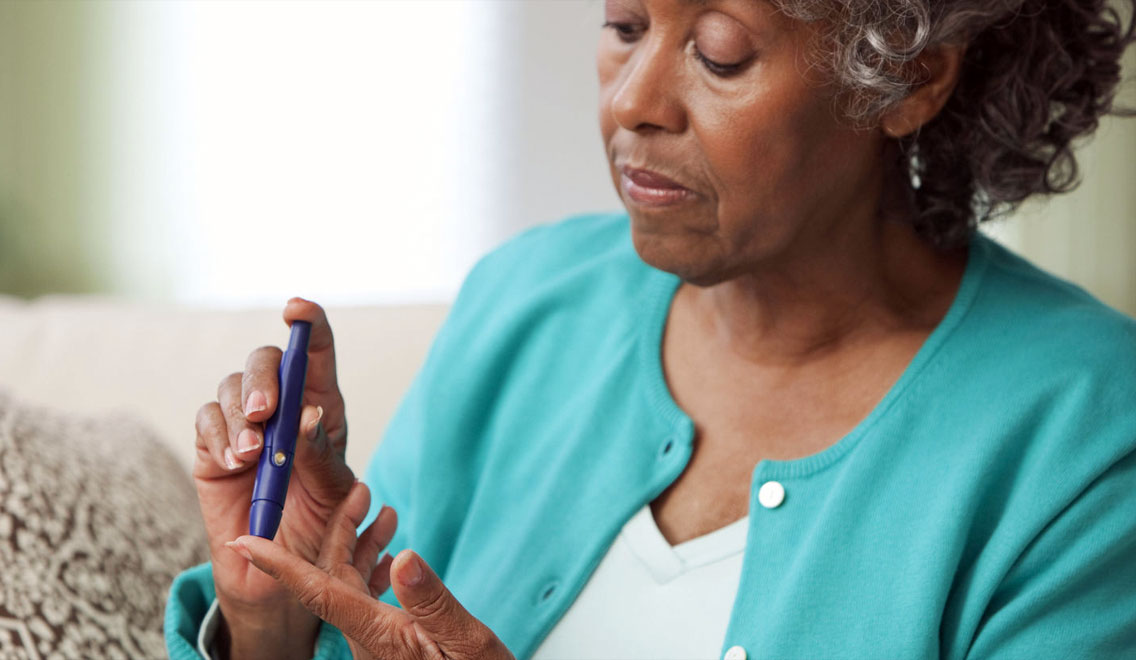Who Gets Diabetes & Why?
For African-Americans, the risk of developing diabetes is almost three-fold compared to their white counterparts. Researchers have recently discovered that high levels of the hormone aldosterone, already associated with high blood pressure, more than double the chances of a person getting type 2 diabetes, and this seems to be a prevalent problem within the African-American community.
While doctors and scientists continue to search for answers regarding why certain people are more disposed to this disease, it is important to also take a look at ways in which people can care for themselves and their families in order to reduce the already present risks.
The Risks for African-Americans
About 30 million Americans have diabetes, and an estimated 1.5 million more are diagnosed each year. And, while anyone can get diabetes, people who have family members with the condition are at greater risk, as are people who suffer from obesity, high cholesterol, high blood pressure, and physical inactivity. However, this does not necessarily explain African-Americans being almost three times more likely to suffer from diabetes. Scientists suggest that it has something to do with genetics and salt sensitivity.
These groups are already experiencing more stress that can lead to heart and other health problems that can compound the risks of developing type 2 diabetes. This stress, referred to as “minority stress,” has led to reports that members of this community aged 18 to 49 are twice as likely to die from heart disease than whites. And African-Americans aged 35 to 64 are 50 percent more likely to have high blood pressure. Minorities seem to be at a greater risk of developing diabetes and other related health issues due to lack of proper medical attention in their communities and access to health services.
Various Types of Preventative Measures
If traditional medicine doesn’t want to properly care for these minority communities then there are other ways in which they can care for themselves. Studies suggest that simply by losing 5 to 7% of your body weight you can drastically reduce your chances of developing diabetes as well as reduce the stress on your heart. By following a low-calorie, plant-based diet you can ensure that you are reducing all of the associated risk factors (high cholesterol, high blood pressure, and obesity) while also developing a healthy heart.
If you are unable to treat the disease itself due to genetic factors, then you can at least mitigate the symptoms and side effects. Neuropathy, one of the most common side effects of type 1 and type 2 diabetes, can lead to numbness or tingling in the feet as well as loss of sensitivity in other areas of your body. To treat diabetic nerve pain, you can ensure you are getting enough exercise, wear compression socks and even give your feet some epsom salt baths a few times a week. Topical gels can also be applied to treat affected areas, and ensuring that you are always drinking enough water can help reduce symptoms as well.
The Future of Diabetes Prevention
Medical professionals will need to begin to play a larger role in educating people about the diabetes-heart connection while also recommending changes needed to manage diabetes in at-risk populations. Those in the African-American community can continue to care for their bodies in ways that reduce their salt intake, decrease their amount of stress, facilitate a healthier heart and reduce their weight. These techniques will ensure they are staying as healthy as possible to prevent the onset of diabetes in the first place.
By Alicia Rennell


